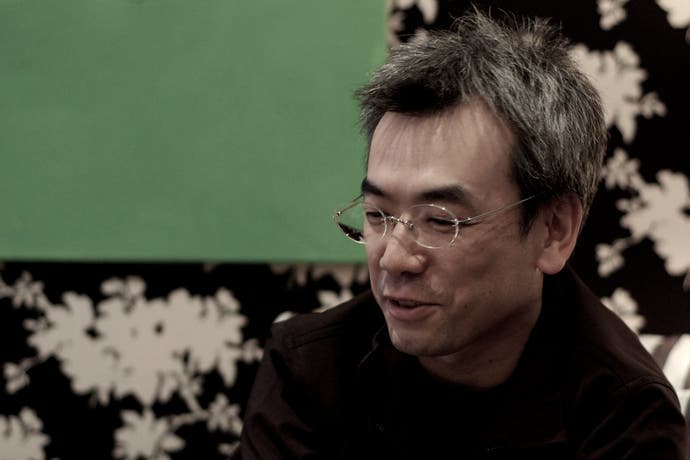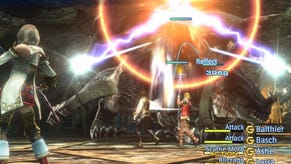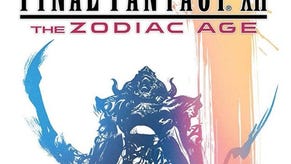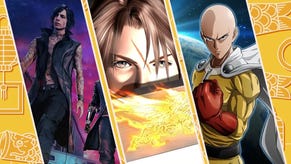This Great Fantasy
Akitoshi Kawazu on producing FF XII.
The many surprising changes to the Final Fantasy series which Square Enix introduces with Final Fantasy XII are a little less surprising when you look at the pedigree of those involved in creating the game. The original man at the helm of the project was Yasumi Matsuno, creator of Ogre Battle, Final Fantasy Tactics and Vagrant Story; having never directed a "number series" Final Fantasy title before, he was given the roles of both director and producer on XII, and immediately set about the creation of a game which would bring to life the world of Ivalice (from FFT and Vagrant Story) and redefine many core things about the series as a whole.
Matsuno departed midway through the development of the game - reportedly due to ill health, although he subsequently left Square Enix and is now rumoured to be working on a Wii title for an independent developer. He was replaced as producer not by a Final Fantasy veteran, but by Akitoshi Kawazu, whose last work on Final Fantasy was when he directed Final Fantasy II on the NES. Since then, Kawazu has worked as the series director on the SaGa games - and when he was parachuted in to oversee the continuing development of Final Fantasy XII, he therefore had little inclination to try and drag Matsuno's changes back to the series' roots.
"To begin with, Matsuno-san and I are very much both game creators - to step in halfway through a project that someone else has started and expect to be able to finish that in the exact same way that they had planned, is not something that is necessarily completely realistic," he explained when we met him in London last week.
"But then, I wasn't necessarily doing the same thing that Matsuno-san had been doing up to that point. My primary goal at the time was to see the project through to completion, and to give encouragement and support to all of the members of the staff that were still there."
However, the question many fans of Matsuno's previous games - all of which were cult hits in the West - will want answered is whether or not the final product is the game Matsuno himself would have made, had he remained on the project.
Kawazu thinks for a moment. "No," he responds, "I don't think that you can say that. Of course, the directors that were there and took over once he was gone, Ito-san and Minagawa-san, certainly they had worked with Matsuno-san before and they were very much familiar with what his original plans for the game were. But still, ultimately, they were making decisions, and it's going to end up in a slightly different place than had Matsuno-san stayed with the project to the end."
Those Who Fight Further

Looking then to the primary changes that Matsuno, and latterly Kawazu, introduced to the game, the most blindingly obvious is the new battle system - which does away with turn-based mechanics and random encounters, both of which have been staples of Final Fantasy since the very first game on the NES. Why did the team choose to make such a major change - and why now?
"The design concept of the game was to have the player very much be exploring and walking around the world itself," Kawazu explains. "The decision to move to a system where the monsters were also already present in the world, in the same way that NPCs and towns were, and then the player would walk around among them in a similar fashion, made the switch to a real-time system a very natural one."
The battle system in the game is complemented by the License Board, which is a brand new system of character development that offers far more customisation and player control than other Final Fantasy games have granted in the past. Although in some respects it's an evolution of Final Fantasy X' Sphere Grid, in other ways it's a completely new system - so why make such a dramatic change to the well-liked Sphere Grid?

"From the very early stages of the game, there was a plan to make a board-style development system, but the road that led to the system you see in the game was a very long one," says Kawazu. "It was developed looking at the other aspects of the character development and battle system in general."
"If you look at the sphere grid from FFX, the roles that the characters are going to play are already very much pre-determined by the starting positions on the board. The battle director, Ito-san, when he was making FFXII's license board, his design philosophy was very much to give players the freedom to make characters the way that they want to."
"That is, of course, a different design perspective from the sphere system in FFX," Kawazu continues. "So, for example, if you want to have Balthier focus on healing and Fran focus on dealing your damage, or vice versa, you're free to do that. If you want to have Penelo wield massive hammers and clobber the enemy, you can do that too. That's largely Ito-san's own design philosophy showing through in the game."















